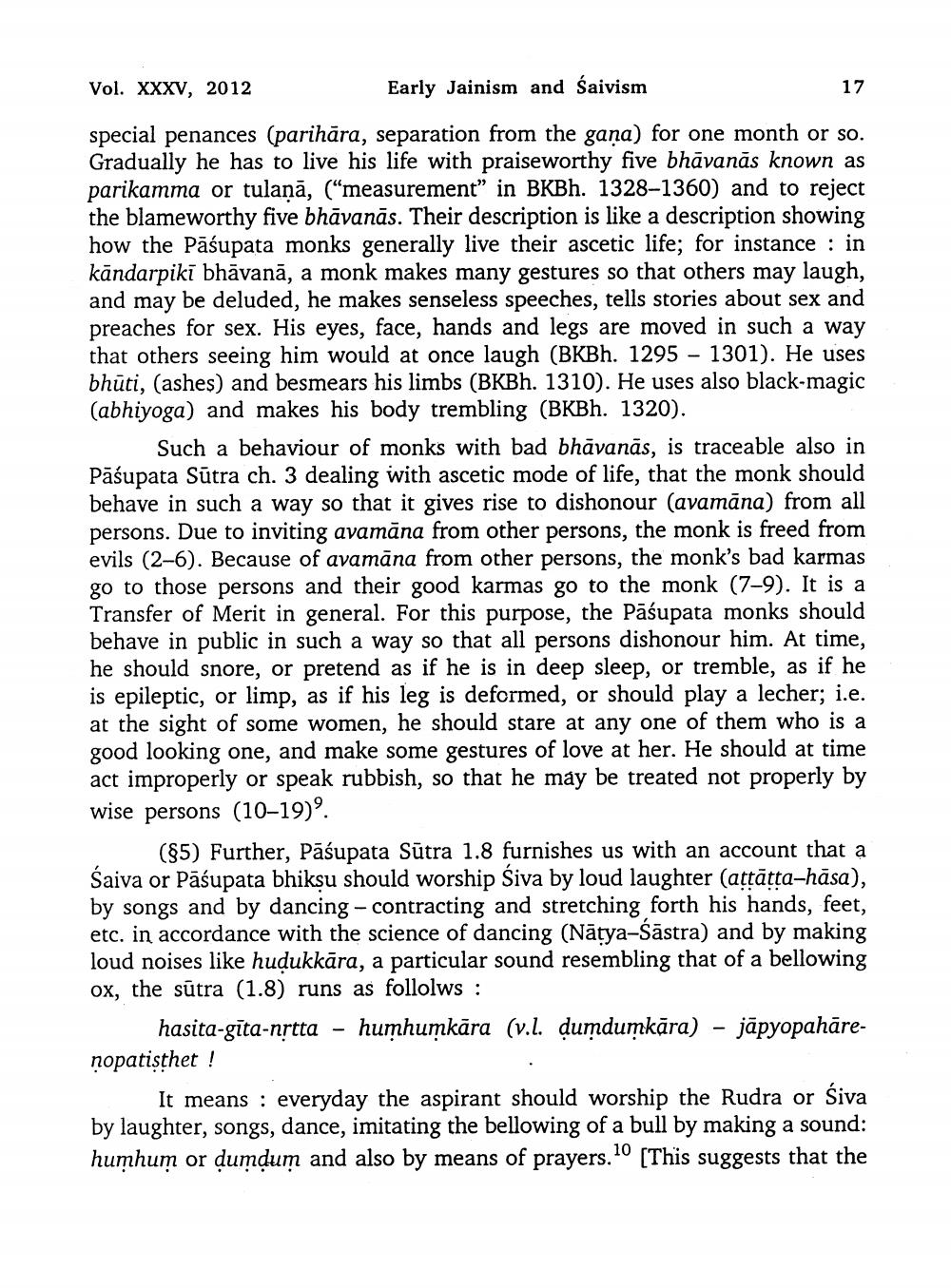________________
Vol. XXXV, 2012
Early Jainism
and saivism
17
special penances (parihāra, separation from the gana) for one month or so. Gradually he has to live his life with praiseworthy five bhāvanās known as parikamma or tulanā, (“measurement” in BKBh. 1328-1360) and to reject the blameworthy five bhāvanās. Their description is like a description showing how the Pāśupata monks generally live their ascetic life; for instance : in kāndarpikī bhāvanā, a monk makes many gestures so that others may laugh, and may be deluded, he makes senseless speeches, tells stories about sex and preaches for sex. His eyes, face, hands and legs are moved in such a way that others seeing him would at once laugh (BKBh. 1295 - 1301). He uses bhūti, (ashes) and besmears his limbs (BKBh. 1310). He uses also black-magic (abhiyoga) and makes his body trembling (BKBh. 1320).
Such a behaviour of monks with bad bhāvanās, is traceable also in Pāśupata Sūtra ch. 3 dealing with ascetic mode of life, that the monk should behave in such a way so that it gives rise to dishonour (avamāna) from all persons. Due to inviting avamāna from other persons, the monk is freed from evils (2-6). Because of avamāna from other persons, the monk's bad karmas go to those persons and their good karmas go to the monk (7-9). It is a Transfer of Merit in general. For this purpose, the Pāśupata monks should behave in public in such a way so that all persons dishonour him. At time, he should snore, or pretend as if he is in deep sleep, or tremble, as if he is epileptic, or limp, as if his leg is deformed, or should play a lecher; i.e. at the sight of some women, he should stare at any one of them who is a good looking one, and make some gestures of love at her. He should at time act improperly or speak rubbish, so that he may be treated not properly by wise persons (10–19).
(85) Further, Pāśupata Sūtra 1.8 furnishes us with an account that a Śaiva or Pāśupata bhikṣu should worship Siva by loud laughter (attātta-hāsa), by songs and by dancing - contracting and stretching forth his hands, feet, etc. in accordance with the science of dancing (Nātya-Šāstra) and by making loud noises like hudukkāra, a particular sound resembling that of a bellowing ox, the sūtra (1.8) runs as follolws :
hasita-gīta-nrtta - humhumkāra (v.l. dumdumkāra) – jāpyopahārenopatisthet !
It means : everyday the aspirant should worship the Rudra or śiva by laughter, songs, dance, imitating the bellowing of a bull by making a sound: humhum or dumdum and also by means of prayers. 10 (This suggests that the




